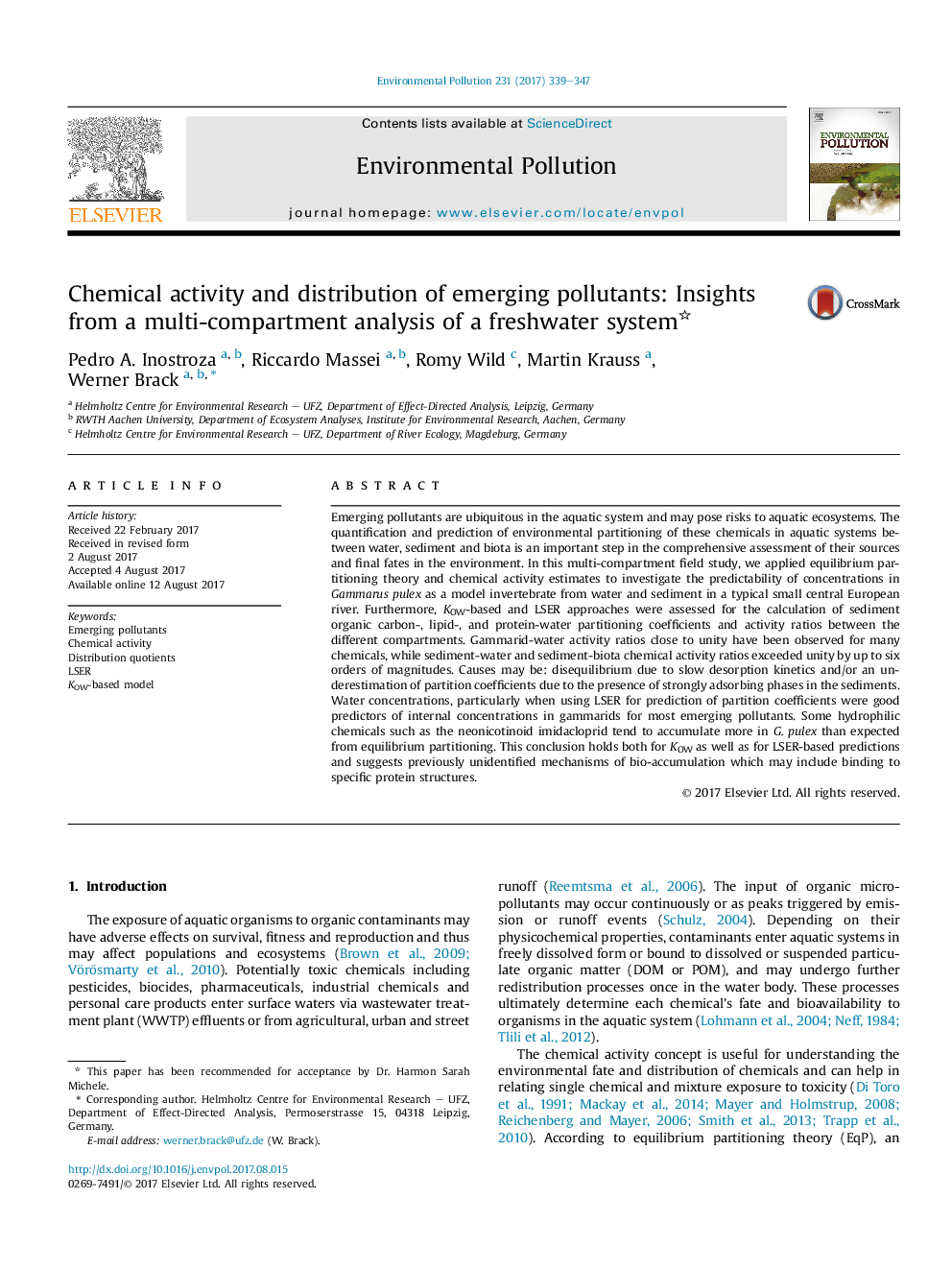| کد مقاله | کد نشریه | سال انتشار | مقاله انگلیسی | نسخه تمام متن |
|---|---|---|---|---|
| 5748574 | 1619142 | 2017 | 9 صفحه PDF | دانلود رایگان |

- Multi-compartment analysis of emerging pollutants in a small central European river considering water, sediment and biota.
- Equilibrium partitioning provides good prediction of body burdens in Gammarus from water concentrations.
- Enhanced bioaccumulation of hydrophilic chemicals such as imidacloprid compared to KOW and LSER based predictions.
- Estimated chemical activities in sediments exceed those of water and biota by orders of magnitude.
Emerging pollutants are ubiquitous in the aquatic system and may pose risks to aquatic ecosystems. The quantification and prediction of environmental partitioning of these chemicals in aquatic systems between water, sediment and biota is an important step in the comprehensive assessment of their sources and final fates in the environment. In this multi-compartment field study, we applied equilibrium partitioning theory and chemical activity estimates to investigate the predictability of concentrations in Gammarus pulex as a model invertebrate from water and sediment in a typical small central European river. Furthermore, KOW-based and LSER approaches were assessed for the calculation of sediment organic carbon-, lipid-, and protein-water partitioning coefficients and activity ratios between the different compartments. Gammarid-water activity ratios close to unity have been observed for many chemicals, while sediment-water and sediment-biota chemical activity ratios exceeded unity by up to six orders of magnitudes. Causes may be: disequilibrium due to slow desorption kinetics and/or an underestimation of partition coefficients due to the presence of strongly adsorbing phases in the sediments. Water concentrations, particularly when using LSER for prediction of partition coefficients were good predictors of internal concentrations in gammarids for most emerging pollutants. Some hydrophilic chemicals such as the neonicotinoid imidacloprid tend to accumulate more in G. pulex than expected from equilibrium partitioning. This conclusion holds both for KOW as well as for LSER-based predictions and suggests previously unidentified mechanisms of bio-accumulation which may include binding to specific protein structures.
117
Journal: Environmental Pollution - Volume 231, Part 1, December 2017, Pages 339-347